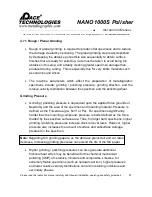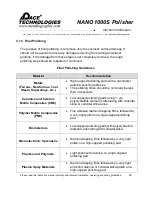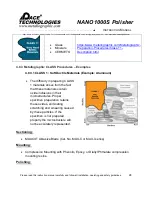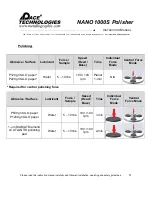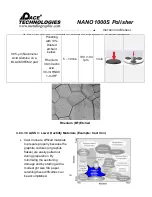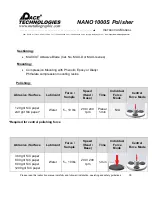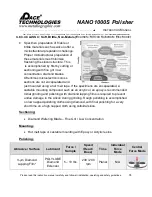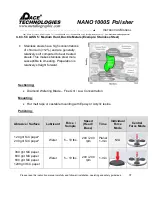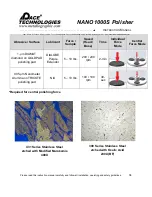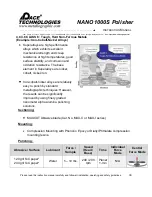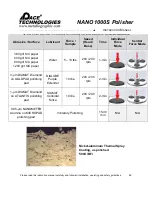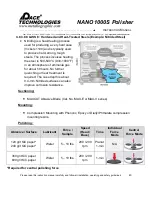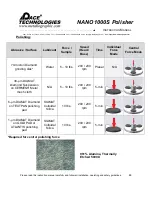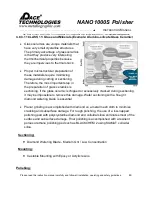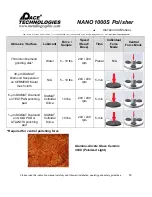
NANO 1000S Polisher
I
NSTRUCTION
M
ANUAL
- - - - - - - - - - - - - - - - - - - - - - - - - - - - - - - - - - - - - - - - - - - - - - - - - - ▲
3601 E. 34th St. Tucson, AZ 85713 USA Tel. +1 520-882-6598 Fax +1 520-882-6599 email: pace@metallographic.com W eb: https://www.metallographic.com
Please read this instruction manual carefully and follow all installation, operating and safety guidelines.
35
4.8.3.4 CLASS 4: Soft, Brittle, Non-Metals
(Example: Silicon Substrate Electronic)
Abrasive / Surface
Lubricant
Force /
Sample
Speed
(Head /
Base)
Time
Individual
Force
Mode
Central
Force Mode
3-
μ
m Diamond
Lapping Film*
POLYLUBE
Diamond
Extender
5
– 10 lbs.
200 / 200
rpm
Planar
N/A
Sectioning:
Diamond Wafering Blade
– Fine Grit / Low Concentration
Mounting:
Hot melt tape or castable mounting with Epoxy or Acrylic resins.
Polishing:
Specimen preparation of friable or
brittle materials such as silicon offer a
microstructural preparation challenge.
Proper microstructural preparation of
these materials must minimize
fracturing the silicon structure. This
is accomplished by first by cutting or
sectioning with fine grit / low
concentration diamond blades.
Oftentimes microelectronic cross
sections are not encapsulated and
just mounted using a hot melt tape. If the specimens are encapsulated, a
castable mounting compound such as an acrylic or an epoxy is recommended.
Initial grinding and polishing with diamond lapping films is required to prevent
undue damage to the silicon during grinding. Rough polishing is accomplished
on low napped polishing cloths using diamond, with final polishing for a very
short time on a high napped cloth using colloidal silica.

